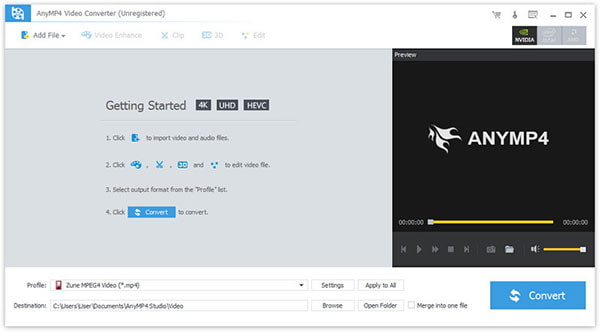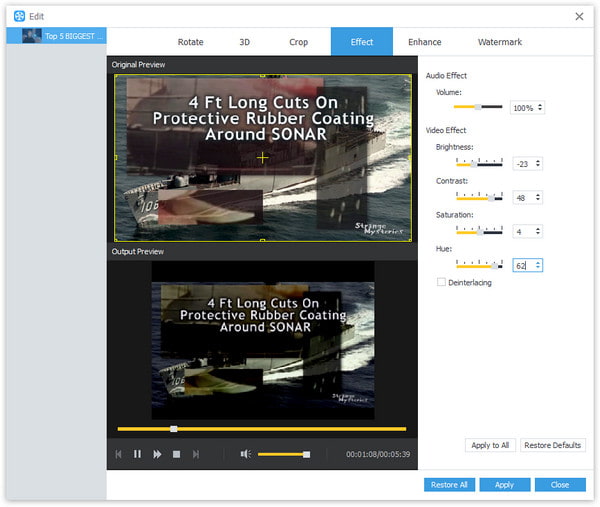
FLV stands for Flash Live Video. The audio and video data within FLV files are encoded in the same manner as they are within SWF files. FLV was originally developed by Macromedia. In the early 2000s, Flash Video used to be the de facto standard for web-based streaming video (over RTMP). Notable users of it include Hulu, VEVO, Yahoo! Video, metacafe, Reuters.com, and many other news providers. Flash Video FLV files usually contain material encoded with codecs following the Sorenson Spark or VP6 video compression formats.
- - Wikipedia
The format specifies a multimedia container file that contains one or more tracks, each of which stores a particular type of data: audio, video, or text (e.g. for subtitles). Each track either contains a digitally-encoded media stream (using a specific format) or a data reference to the media stream located in another file. Tracks are maintained in a hierarchical data structure consisting of objects called atoms.
- - Wikipedia

Step 1. Download and install the program, then double click it to run it, and then you'll see the main interface of the program.

Step 2. Click "Add File(s)" button. Here you can select "Add Video" or "Add Folder" button to add files as you like.

Step 3. Click the drop-down arrow right beside the "Profile" column and select your desired video format from the drop-down list.

Step 4. Click "Edit" button to customize the output video like Effect, Trim, Crop, 3D Settings and Watermark.